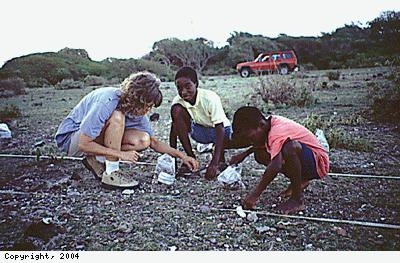The Island of Nevis
Earliest settlers
The first inhabitants of the islands of St Kitts and Nevis, called the Sibonay, appear not to have known how to make pottery. From evidence on Nevis it seems they arrived about 2,000 BC from Central America (they started moving into the Caribbean from about 2,500 BC). The next wave of people to colonise the islands were the Arawak, coming from around the Orinoco River in modern day Venezuela. After them came the Caribs, again from South America. The Arawaks and Caribs left far more remains than the Sibonay and there is evidence of settlement from various archaeological sites around the islands. Pottery and simple stone and shell tools from these ancient peoples are on display in the museum on Nevis. Artefacts to be seen include chert and flint scrapers and blades (chert is a stone with similar properties to flint and tools made from it would have been used to prepare fish), pieces of ancient coral which would have been used to prepare vegetables and herbs, and turtle bones possibly from an ancient meal. The remains of at least one settlement can be seen at Coconut Walk on Nevis, where pottery shards or remains lie on the beach and prickly pear cactus still growing in a huge circle would have provided safety for the camp. This site was investigated by British television’s TimeTeam programme in 1998, following the work of Dr Sam Wilson.
Some of the archaeological remains on Nevis have been excavated and documented with the help of Bristol and Regional Archaeological Service, BaRAS, who work closely with the Nevis Historical and Conservation Society. Each year a team including people from BaRAS visits the island for archaeological work and take out young people of African-Caribbean origins from Bristol. This project enables them to find out more about their heritage and encourages an interest in the preservation of Nevis’ history.
The work by BaRAS and Southampton University grew out of work done by television’s Channel 4 TimeTeam programme on the site of the Pinney plantation in 1998. Many of the TimeTeam archaeologists are based in Bristol, so the continuation of work by BaRAS is apt.
The Nevis Historical and Conservation Society works to document the history of the island and to save important sites and buildings. The Museum of Nevis History, located in Charlestown, tells the story of the island. The Horatio Nelson Museum, on a hill a little way out of the centre of Charlestown, also trells the story of the island, but concentrates on Nelson. The display ‘Nevis at the time of Nelson’, tells about Horatio Nelson and Nevis in 1786 when he was based there as a British naval captain. Ships of the British navy were based in the Caribbean to enforce trade restrictions imposed by British laws. Exhibitions planned for 2004 are ‘Out of Africa -from slavery to independence’ and ‘Girl Guides: 50 Years on Nevis’.
The island is the subject of much historical and archaeological study. Besides the work of BaRAS, two other archaeological teams work there each year, and there is historical research into the plantation records of various estates.

 Nevis, ‘Our Lady of the Snows’
Nevis, ‘Our Lady of the Snows’ People and Places
People and Places Earliest settlers
Earliest settlers The arrival of the Europeans
The arrival of the Europeans Arriving on the Island today
Arriving on the Island today Education
Education Young People on the Island
Young People on the Island Government
Government Sugar and Sugar Plantations
Sugar and Sugar Plantations Churches and Religion
Churches and Religion

